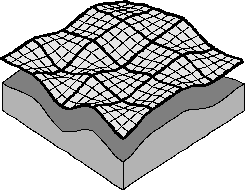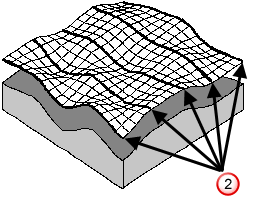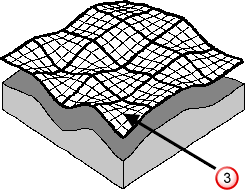A Power Surface is made up of a network of wireframe curves.

Some curves run along the surface. These curves are called longitudinals  .
.

Others run across the surface. These are called laterals  .
.

The surface will always pass exactly through these curves, which can each be individually edited. The curves control the key points which the surface must pass through, and the tangent directions at those points. To add finer control to a surface, you can create an extra lateral or longitudinal control curve.
The control curves are cubic Bézier curves. This type of curve can be specified as a series of points through which the curve must pass, together with optional tangent directions into and out of each point.
The area of the surface between adjacent pairs of laterals and longitudinals is called a patch  .
.

Most Power Surfaces are created from a network of wireframe curves. However, fillet, split and draft surfaces are also classed as Power Surfaces.
Most design jobs will involve more complicated surfaces made by combining several power surfaces together. This may be done to, for example, avoid the risk of stress concentrations, or for aesthetics. It is often convenient to define such complex surfaces using several power surfaces that intersect or overlap, which can then be stitched or appended. The power surfaces may also be trimmed by the lines of intersection, known as trim boundaries. The power surfaces, together with their defining curves and boundaries, comprise the data for a model stored in the database. For further information on creating complex surfaces, see Editing Power surfaces.